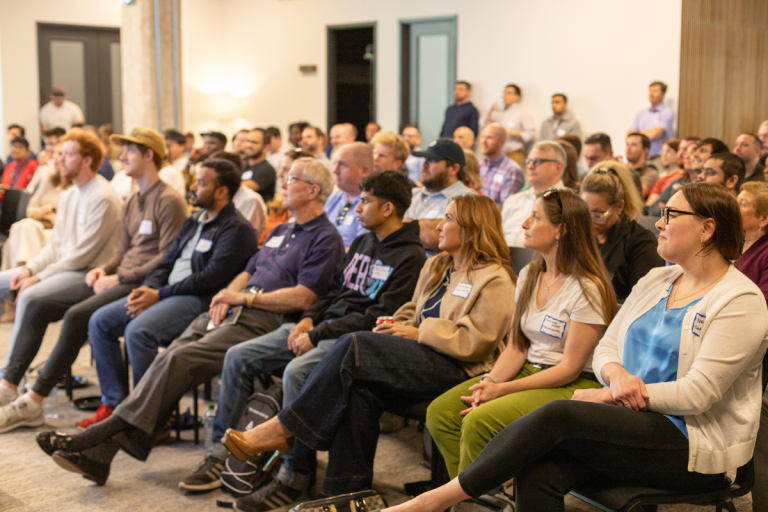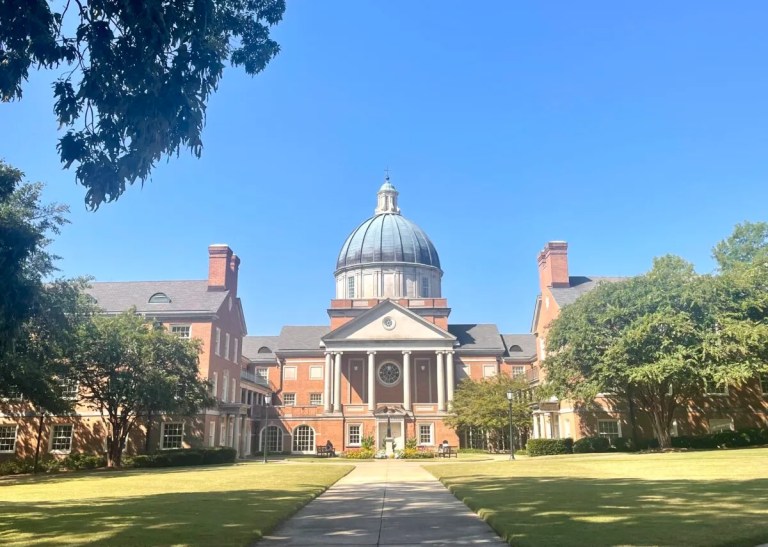Autonomous Cars in Alabama – Are we ready?
Reading time: 5 minutes

Look at nearly any science fiction show since Herbie and you’ll see cars that drive themselves. If you buy certain models, today your car can even park itself. But we’re a long way off from being able to call our cars on the phone and have them pick us up, according to Dr. Abidin Yildirim, Director of UAB’s Signal Processing and Embedded Systems Laboratory. Dr. Yildirim and his laboratory work on the most important part of any autonomous car: the programming that allows a car to interpret and react to its surroundings. I interviewed Dr. Yildirim and visited his lab to learn more about what is being pushed as the future of transportation.
What makes a car autonomous? Nearly anything can be made autonomous, with the right hardware and software, and higher end RC toys have included a semi-autonomous return function for years – I remember one of my high school classmates showing his off to us on the school field. The questions become “how could we improve this solution?” and “how do we integrate this solution into society,” which raises its own questions. That’s where the Signal Processing lab comes in, developing increasingly effective ways of interpreting data from radar, cameras, and lidar, which is basically radar but with lasers. The lab works closely with government agencies like NASA and DARPA to increase the detail of image processors. But if we have the technology, then why aren’t cars driving themselves already?
It’s a matter of philosophy and ethics, not to mention every automaker today is worried sick by the potential legal liability for every accident their cars are involved in. Until a solid legal framework is decided, no automaker wants to be the first example of robot cars gone bad, and until an automaker forces the federal government’s hand, nobody will try to pass legislation on the subject. In addition, researchers aren’t yet confident enough in cars’ ability to process information in an efficient way. There are dozens of sensors in active use even on regular cars, and far more in an autonomous vehicle. Forcing all that data through a computer takes a very, very powerful computer. Right now, the computers to process all that data exist, but not at a cost or size that makes sense for consumer products.
However, as soon as self-driving cars hit the streets, they will start to improve. Each car intentionally networks with others, as well as with the automaker’s own servers. The more data collected, the faster and more accurately cars can recognize and avoid a potential accident. Imagine a car that could make the best choice possible in any condition – day, night, snow, rain, extreme wind, anywhere there’s a road.
“Should we make this car autonomous?” becomes a larger question than might be expected: what will people do with the time they gain? What is the purpose of making a car autonomous in the first place? Will it lead to greater social isolation? Dr. Yildirim suspects that all people will do with their free time is work more – which may be more or less stressful than driving. When the New York City subway system installed cellular transmitters and WiFi routers in stations, people suddenly stopped just relaxing and started doing whatever it was they were going to do once they left the subway. For many commuters, increased convenience actually took away their free time.

Security is also a concern. If you owned a Chrysler, Jeep, or Dodge made in the last decade or so, you may have heard about the cars getting hacked. What happens when someone expects their car to move on its own? The data being transmitted between cars and between components is meant, finally, to be read, and that means the encryption on it can be broken with enough time and effort. The thought that you might need antivirus for your car is a bit off-putting.
Despite all that, the potential to save lives is in my opinion greater than the potential for harm. Reducing the annual rate of fatal accidents even by a third would save 10,000 lives a year, and autonomous cars can drive more precisely and efficiently than their human-operated counterparts. Perhaps not as beneficial as investing in better mass transit infrastructure, as Dr. Yildirim suggested, but an autonomous vehicle is far more adaptable than a rail network or bus line for those living outside a major metropolitan area.

Alabama is, relative to cities that play host to automakers’ corporate headquarters, not a particularly large player in the autonomous vehicle game. Summer camps are a great way to start learning about what goes on behind the scenes. Undergraduate and graduate level courses allow Labs, such as Dr. Yildirim’s, for students to find their feet doing real world research in engineering, signal processing, and cybersecurity. And, anyone who wants to go on to work in the private sector right now, is going to have to either move or telecommute. But the potential for greatness is already here. Let’s hope Alabama catches on to this next phase of autonomous car technology and production.



